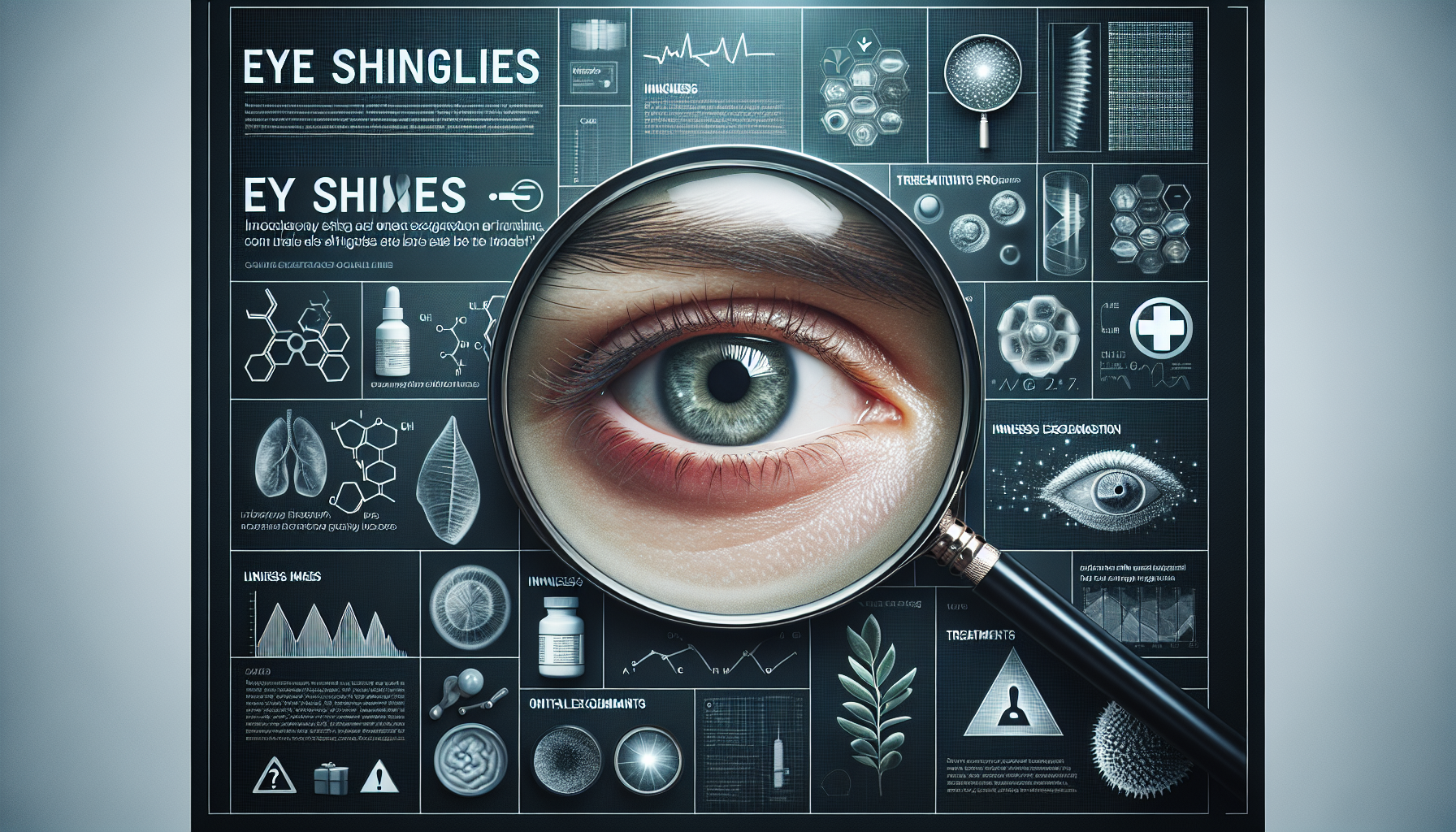A history of chickenpox during childhood may predispose you to a condition known as shingles in later stages of life. Shingles can occur anywhere in your body, including your eyes, leading to potential complications and vision impairment. If you suspect you may have shingles, it’s best to seek medical consultation for appropriate treatment.
Understanding Ophthalmic Shingles
Shingles is caused by the varicella-zoster virus which is the same virus that leads to chickenpox. After the initial chickenpox infection, this virus may lie dormant in some people and become active later in life, causing shingles. This condition characterized by a painful rash can occur many years after the initial chickenpox infection.
In about 10-20% of individuals who develop shingles, the rash may manifest in or around the eye, a condition known as herpes zoster ophthalmicus. While shingles more commonly develop on the back or chest, it can also affect the eye, surrounding facial areas, or other parts of your body.
Although most individuals recover completely from shingles, those with eye shingles may face unique challenges such as vision loss and scarring. Individuals with compromised immune systems are also at risk of long-lasting effects from the virus.
What Triggers Shingles in the Eye?
The varicella-zoster virus resides in the nerves of those who have had chickenpox. When it reaches the eye, it can lead to herpes zoster ophthalmicus, causing severe pain and the characteristic rash of shingles.
While the virus doesn’t always become active in individuals who had chickenpox, when it does, the resultant shingles rash typically appears along the back, ribs, and chest. Occasionally, it can manifest in other places like the face or legs.
Experts link an increase in shingles cases, tripling from 2004 to 2016, to weakened immune systems and stress. Predicting if you will get eye shingles is challenging as the virus can spread throughout your body and manifest in different areas.
Recognizing the Symptoms of Eye Shingles
Eye shingles manifest differently when the rash appears in the eye versus around it. Shingles inside the eye, visible on your sclera (the white part of your eye), pose a greater risk as they can lead to vision issues, including vision loss, even after recovery. When the rash appears around your eye but not in it, it’s referred to as “eye involvement.”
Regardless of where it manifests, shingles symptoms typically occur only on one side of your body. This means that even if you have a painful rash in or around one eye, the virus is unlikely to spread to the other side of your face.
Eye shingles can cause symptoms including facial tingling, a rash or red blisters on the face, eyelid swelling and redness, eye pain, deteriorating vision, watery eyes, and light sensitivity. You may also experience general symptoms like headache, low-grade fever, fatigue, and flu-like symptoms. Shingles typically start as nerve pain, with the red rash appearing later on the painful areas.
Who is at Risk?
If you had chickenpox as a child, you’re more likely to develop shingles. While shingles symptoms can occur in teenagers and young adults, they’re more common in adults over 50.
A compromised immune system due to factors like age, chemotherapy, HIV, or an autoimmune disease increases your chances of getting shingles, including around the eye. Certain medications like corticosteroids and tumor necrosis factor (TNF) drugs can also weaken your immune system.
Stress, pregnancy, and premature birth are additional risk factors for shingles. Eye shingles can lead to long-term damage to your eye and surrounding areas, including postherpetic neuralgia, permanent scarring, retinal swelling, glaucoma, corneal injury, and temporary or permanent vision loss. However, existing eye conditions like glaucoma do not necessarily increase your likelihood of getting the rash in or around the same area.
Preventing and Treating Eye Shingles
You can only get shingles if you’ve previously had chickenpox. Consequently, vaccinations against the varicella-zoster virus are recommended for children and adults who haven’t had chickenpox.
If you’ve had chickenpox, you should get the shingles vaccine. This vaccine is more potent and can prevent you from developing shingles. It is recommended for individuals over the age of 50.
If you do develop shingles, it’s important to avoid contact with others, especially those who haven’t had chickenpox, are pregnant, or have weakened immune systems. Cover your rash to prevent spreading the virus and refrain from touching your eye.
Diagnosing shingles is typically straightforward, with doctors recognizing the condition based on its unique placement on one side of the body and its common occurrence. Additional examinations may be performed if shingles are suspected in the eye. In rare cases, a fluid sample from the blisters may be taken for testing.
Shingles respond well to antiviral medications like acyclovir, famciclovir, and valacyclovir. These drugs prevent the virus from spreading, hasten the healing of the rash and blisters, and control nerve pain. Starting antiviral medications within three days of noticing symptoms can lead to complete recovery in most people.
Additional treatments may be prescribed if the rash spreads to your eye. These may include steroid medications as eye drops or pills. Neglecting to treat shingles in the eye can lead to severe problems that impact daily life.
In conclusion, while the shingles rash can take a few weeks to months to heal completely, most symptoms will eventually fade. However, if the virus reaches your eye, watch out for changes in vision and other issues that can persist even after recovery. If you experience pain, vision trouble, or any other lingering symptoms of eye shingles, consult your doctor for further treatment options.

Comments are closed for this post.